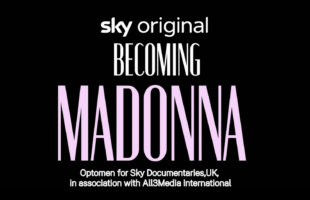Profile
Mongolia is a large country of approximately 1.6 million square kilometres and a population of 2.7 million (2009 census). The majority of the people (1 million) live in the capital Ulaanbaatar. The remainder are scattered through more than 400 settlements of varying sizes ranging from centres of provincial government (Aimag centres), local government centres (Soums), and smaller villages in isolated dwellings. The population is well served by analogue television, and six programmes are delivered nationally via satellite, to almost 400 rebroadcast sites. Within the capital Ulaanbaatar, there is one public television service and 15 private free-to-air (FTA) broadcasters.
Existing analogue television distribution
The terrestrial analogue television (ATV) arrangements are of three distinct types:
1. Ulaanbaatar services Television in Ulaanbaatar is provided by the government funded national independent public broadcaster (Mongolian National Broadcaster [MNB]), and 15 private television broadcasters.
2. Aimag centres services There are 21 provinces (Aimags) within Mongolia and each has its own Aimag centre. The population of these centres ranges from 50 to 90,000 people. The Aimag centres have terrestrial rebroadcast of the six core satellite delivered services.
3. Soum services There are over 300 Soums, the largest of which have populations of about 9,000 people. These are provided with an installation similar to that of the Aimag centres.
4. DTH satellite services for remote and isolated people The Mongolia government pays USD 1.2 million per annum to the satellite pay television operator D-Dish Corporation for multiplexing, up-linking, and satellite capacity for the delivery of the six core television services. The DTH service uses Ku band transponders on an APSTAR satellite. D-Dish is reported to have approximately 50,000 pay television subscribers.
Cable/subscription television
There are many cable television networks in Ulaanbaatar, in most of the Aimag centres and in some of the larger Soums. Cable take-up is reported to be high and predominates in the more densely settled areas. There are many low cost analogue services, which are very variable in size and technology. Cable roll-out seems to have been market driven giving rise to competing networks.
Government Policy
The Mongolia Government has made a formal commitment to close analogue services at the end of June 2014. It has approved a budget for initial implementation of digital television services during 2011, which will cover only the government funded core television services. From discussion with the Communications Regulatory Commission (CRC) and some private broadcasters, several broadcasters have a strong interest in establishing HDTV services. The potential demand for HDTV in the short term is likely to be variable.
The excerpt above is condensed from Development of a Digital Terrestrial Television Migration Roadmap for Mongolia, November 2011, published by the International Telecommunication Union (ITU), Geneva, Switzerland. Used with permission.
TV ASIA Plus asks our industry experts just what opportunities are available in Mongolia.
Q: While foreign media have entered Mongolia for a while now, how has recent changes in the broadcast climate increased the ease of entering Mongolia?
Playboy Plus TV: In 2001, Mongolia was a US$1 billion economy, now a decade later, its GDP had reached US$10 billion. With the rich mineral resource in mining with copper and gold reserves, and the newly-formed government to go towards a modern country, Mongolia broadcasters are opening up to worldwide well-known programming and is bringing in credible and branded television content step by step.
DW: Certainly in the last 12 months, there are new operators in the market offering their audience more choices and access to foreign channels. Although a fairly small market, we expect very fast development in the media and local content with keen focus on ICT services.
SES: With Mongolia’s massive land of 1.5 million square kilometres or 1/3 the size of China and only 2.7 million people scattered across the country, satellite is definitely an ideal solution. In the landlocked country with harsh terrain and limited terrestrial infrastructure outside the main cities, it is more cost effective to set up a dish in remote areas. The increasing mining activities in Mongolia also mean there is a need to provide connectivity to those rural areas.
HBO Asia: HBO Asia is currently focusing on increasing our distribution in Ulaanbaatar city due to its improved infrastructure, but as the number of IPTV operators increase in Mongolia, we are looking into increasing our channel offerings to the country side and more areas within Mongolia.
Q: Broadcast infrastructure wise, how ready is Mongolia for more foreign entrants?
Playboy Plus TV: The Mongolia broadcast infrastructure is taking steps to be better for the foreign entrants. In Mongolia, the internet infrastructure and wificoverage is efficient and convenient. IPTV and HD delivery are progressing effectively. The carriage capacity is available, and different pay television packages or tiers are now being marketed to test the response.
SES: With more Mongolians moving to the capital, Ulaanbaatar, the demand for TV and internet connectivity has risen. Local telcos such as GemNet and Mobicom have invested heavily in the fibre network in order to provide this service efficiently. I.e Mobicom plans to switch the traffic with 40Mbps from iDirect to fibre network later this year. In the last couple of years, the Mongolian government has issued more licenses for DTH, IPTV and mobile TV operators. In Ulaanbaatar, there are around 20 FM radio licenses and 15 VHF/UHF TV channel licenses. In every provincial city, there are at least 2 FM radio and 36 TV licenses. Mongolia is probably one of the fastest growing telecommunications and broadcasting markets in Asia. Together, satellite and cable complement each other to provide seamless connectivity to Mongolians living throughout the country.
DW: New IPTV platforms in the market have propelled the distribution of foreign channels into the market further.
Q: Has the understanding of IP rights improved? Describe the ease of cutting programming or carriage deals with Mongolian operators and channels?
DW: We are dealing with the main operators and they have to date respected the deal terms we entered into. We have been fairly fortunate in securing carriage deals for our channels – the operators were professional, specific and fast in closing the deals.
Playboy Plus TV: Mongolia broadcasters and media platform owners are respecting the copyright protection of contents; and have improved vastly with IP rights protection in terms of encoding and delivery. We have been approached by Mongolia for a number of years. Yet until one year ago, we went through and closed negotiations step by step. We are happy to have signed with major platform carriers and worked closely with them on every IP detail.
SES: While more TV channel operators are seeing Mongolia as a new market, the small population of the country means that it is more cost effective to offer alternative solutions when it comes to providing TV content as opposed to investing heavily in the market. I.e some channels provide tapes of content to DTH operators in Mongolia as opposed to the entire channel, allowing the people in Mongolia to still enjoy their TV programmes.
Q: What‘s the profile of the Mongolian audience you hope to attract with your content?
DNAP: We currently have five channels available in Mongolia – Discovery Channel, Animal Planet, Discovery Science, Discovery Home & Health and Discovery HD World. Our Mongolian audience profile for the channels mirrors that of our other markets across Asia – affluent males aged 25 – 54 for Discovery Channel, Animal Planet, Discovery Science and Discovery HD World, and a younger female audience aged 18 – 45 for Discovery Home & Health.
Playboy Plus TV: In Mongolia, many have travelled overseas and been in Asia and USA, with exposures to worldwide well-known programming like Playboy TV. We are hoping to attract all Mongolian men (and some women).
DW: With our DW English language TV channel, we aim to reach the local urban audience. We have assigned the right to subtitle to the operators as a first step to achieving this.
Q: Describe your company’s current involvement and future investments in Mongolia.
HBO Asia: HBO has been in Mongolia since January 1997. Back then, HBO was distributed predominantly in Ulaanbaatar by Super Vision Cable TV and close-captioned Mongolian subtitling on HBO was available since 2003. CINEMAX first arrived in Mongolia in August 1999. In 2010, HBO had carriage on our first IPTV platform in Ulaanbaatar with Univision, who also distributed our bouquet of multiplex channels – HBO, HBO SIGNATURE, HBO HITS, HBO FAMILY and CINEMAX, along with our first high-definition channel, HBO HD. In 2011, all six channels had carriage on Sansar HD. This July, Sky C&C became the second IPTV operator to distribute all six channels and the first to offer our second high-definition channel, HBO HITS HD.
Playboy Plus TV: We plan to launch VOD by the end this year; and then we shall explore a full channel next year. We have signed agreements with major IPTV and HD operators and shall implement marketing and launch activities, making sure all programming conforms to local Mongolian censorship laws and will be in subtitled in local language.
DNAP: Discovery Networks has been present in Mongolia since 2002. Our channels are available via three affiliate partners – Supervision, Univision and Sansar HD. We continue to support our partners’ efforts in this market and evaluate future growth opportunities.
DW: DW (Asien), which is our German service, is carried on Sansar Cable and Univision IPTV whereas DW (English language service) is carried on SKY IPTV. We also license DW Transtel programmes to the local free-to-air channel.








